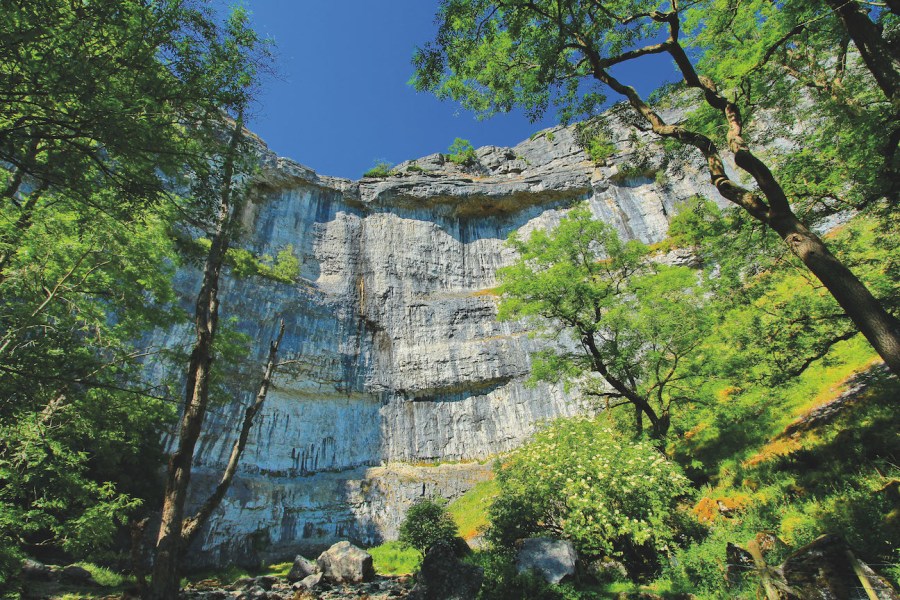The Yorkshire Dales is a world of expansive fells, spectacular limestone geology and achingly beautiful valleys. Here are some of our favourite walks in the region.
The Yorkshire Dales is all about character. It is perhaps most famous in the wider world for the Three Peaks challenge walk; but this is one of the most distinctive, characterful upland landscapes in Britain, a realm of wide, glacier-gouged valleys and whalebacked fells, where isolation has preserved a unique rural texture shaped by centuries of sheep farming, all coloured and influenced by the underlying limestone geology.
There is a peaceful, world-apart atmosphere which isn’t quite like anywhere else. Expect achingly beautiful villages, an endless patchwork of dry-stone walls, karst caves, mighty crags, gorges, woodlands, bone-white limestone pavements and, in spring, vibrant wildflower meadows in spring.
Picture credits: Shutterstock
1. The Three Peaks
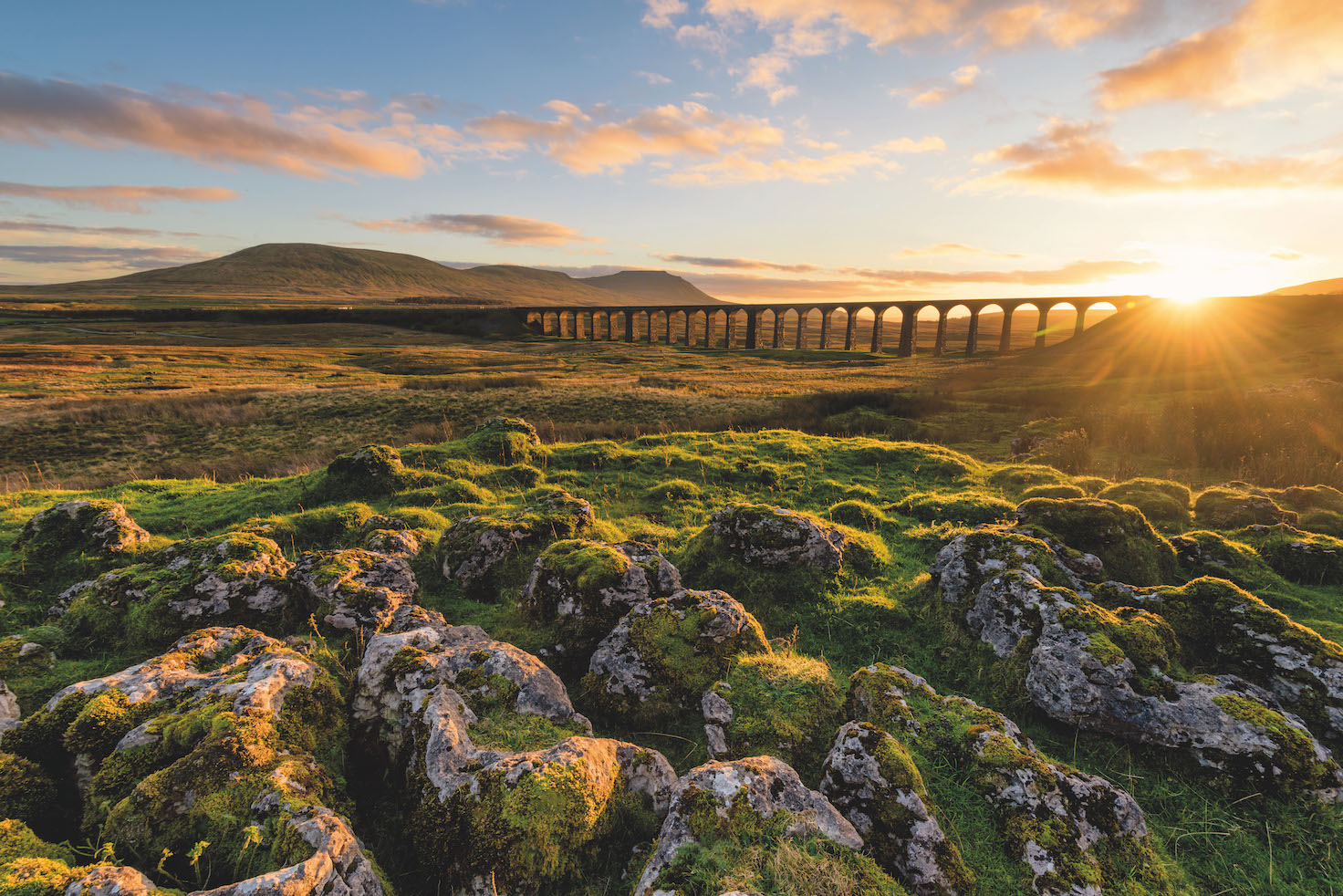
Ingleborough and the Ribblehead Viaduct
We all know about that Three Peaks, but this is the original. A roughly 38 kilometre (24 mile) undertaking, with around 1500 metres (5000 feet) of ascent, this round of Pen-y-ghent (694m), Whernside (highest hill in modern-day Yorkshire at 736m) and Ingleborough (723 metres) – all proud lion-shaped summits – is no walk in the park, as much because of the long miles between the hills as the hills themselves. It’s often undertaken as a rite of passage with friends, or a challenge walk by charity and fundraising groups, and particularly in the summer, the route can get hectically busy, so attempting it ‘off-season’ is often best.
2. Malham Cove and Gordale Scar
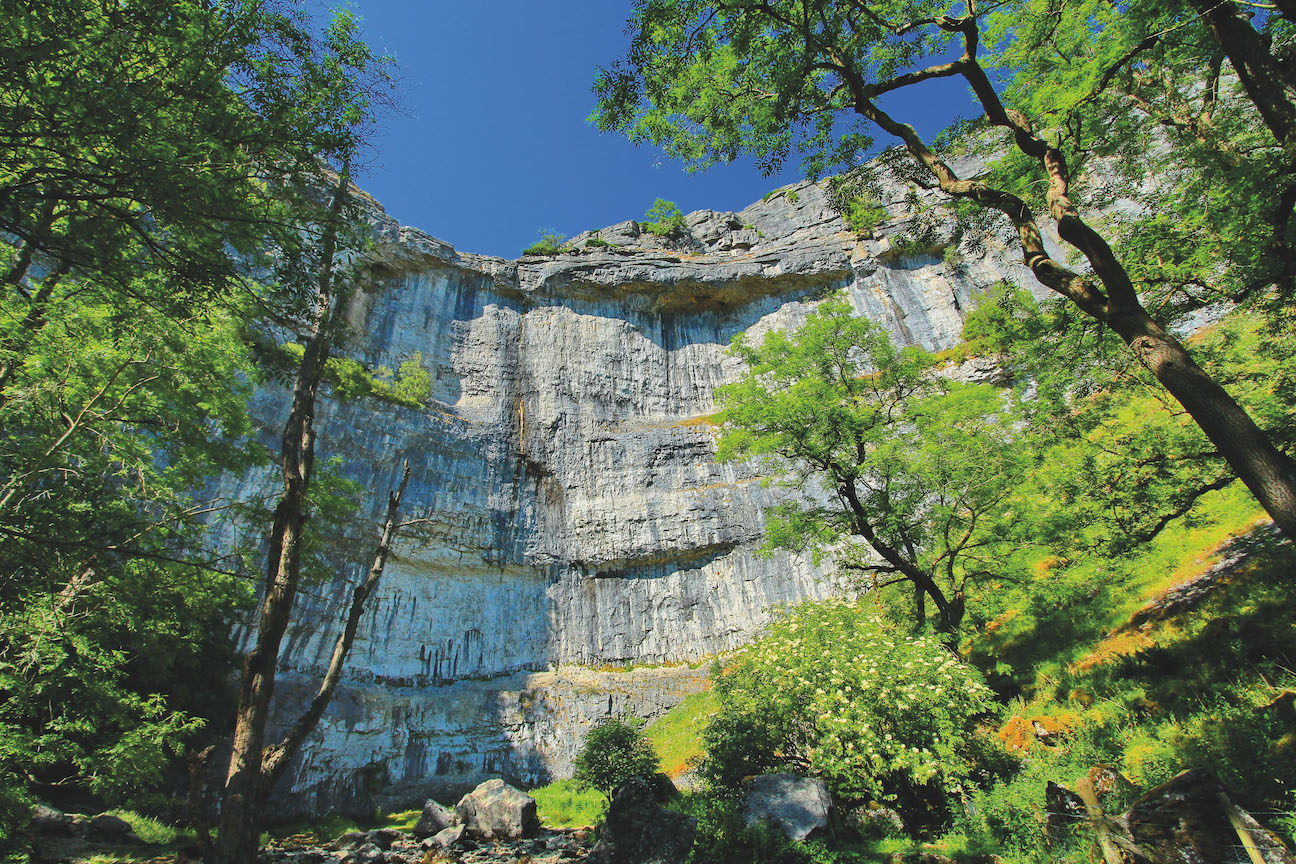
Malham Cove in spring
Malham Cove is one of the most stark and impressive landscape features anywhere in Britain: a huge, echoing, overhanging face of silver limestone, the remnant of an ancient waterfall which was taller than Niagara Falls. But the neighbouring Gordale Scar, where water still booms through a sublime gorge, is no less impressive. The circuit from Malham, with a pulse-quickening scramble of the tufa waterfall of Gordale Scar (easier than it looks), over to Malham Tarn, and down to Malham Cove through the dry gorge of Ing Scar, is one of the most geologically impressive walks in England.
3. Ingleborough
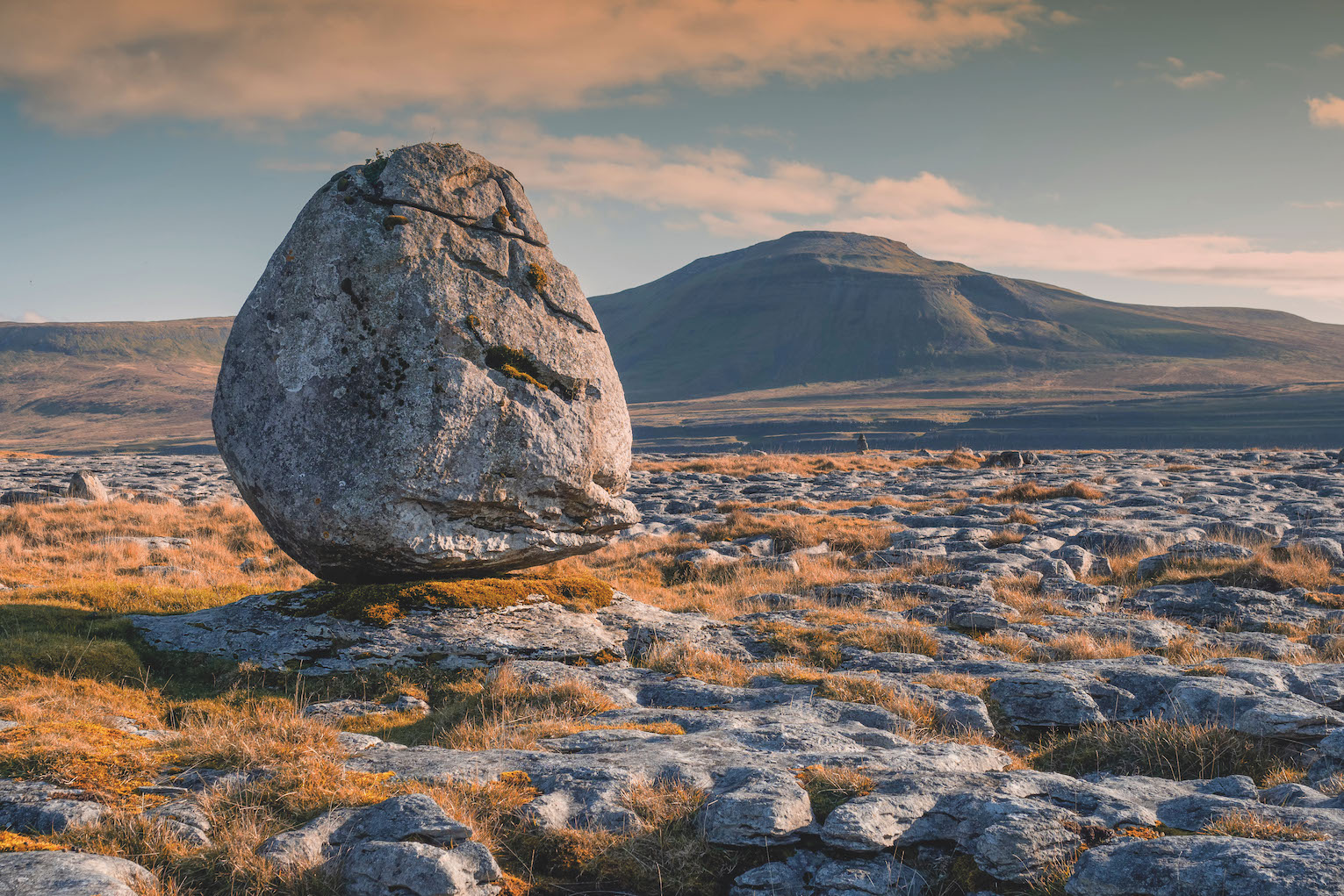
A glacial erratic rock on limestone pavement, with Ingleborough beyond
Ingleborough (723m / 2372 feet) is not the tallest of the ‘Three Peaks’, but probably the best. With its cap of Millstone Grit on top of a long ‘body’ of limestone, it has the shape of a huge sphinx or lion, and the views from its sprawling summit plateau stretch out to the Irish Sea and the Lake District. But it is also surrounded by bone-white acres of limestone pavement, hosting rare flora, and other forms of fascinating karstic geology. The approach from Clapham, then over to Sulber and back, is the best way to experience both the hill and its surroundings.
4. Pen-y-Ghent
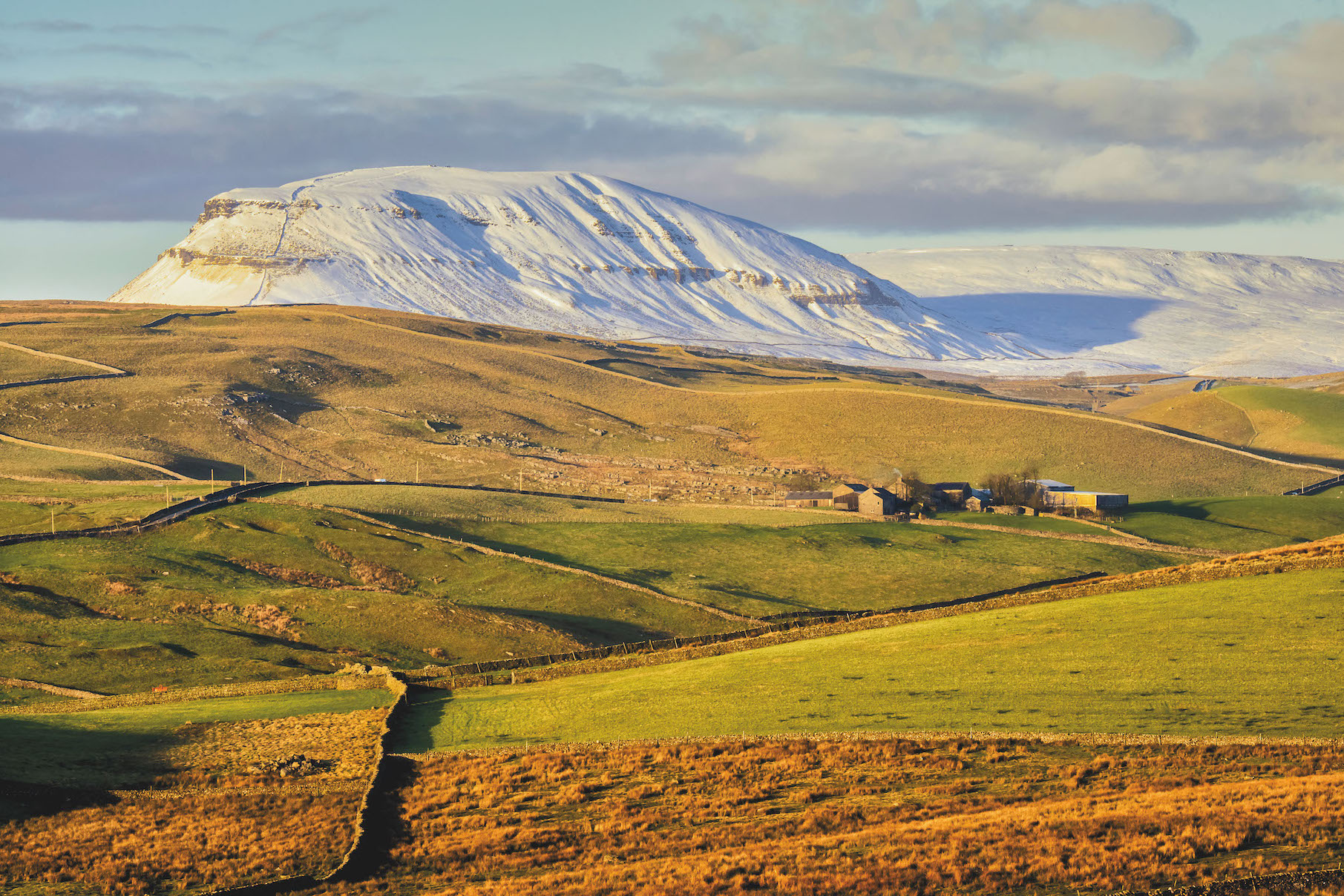
Pen-y-ghent in winter
At 694m (2,277 feet) Pen-y-ghent is the ‘baby’ of the Three Peaks, but it makes up for it in charm and character. Like Ingleborough, it has a distinctly regal profile, while the climb to its crag-girded top via the typical route from Horton-in-Ribblesdale, approaching from the south, involves some enjoyable easy scrambling and rewards you with a magnificent view of Ingleborough and Ribblesdale. Drop back to Horton via Hunt Pot, or extend your wander by taking in Plover Hill.
5. Buckden Pike
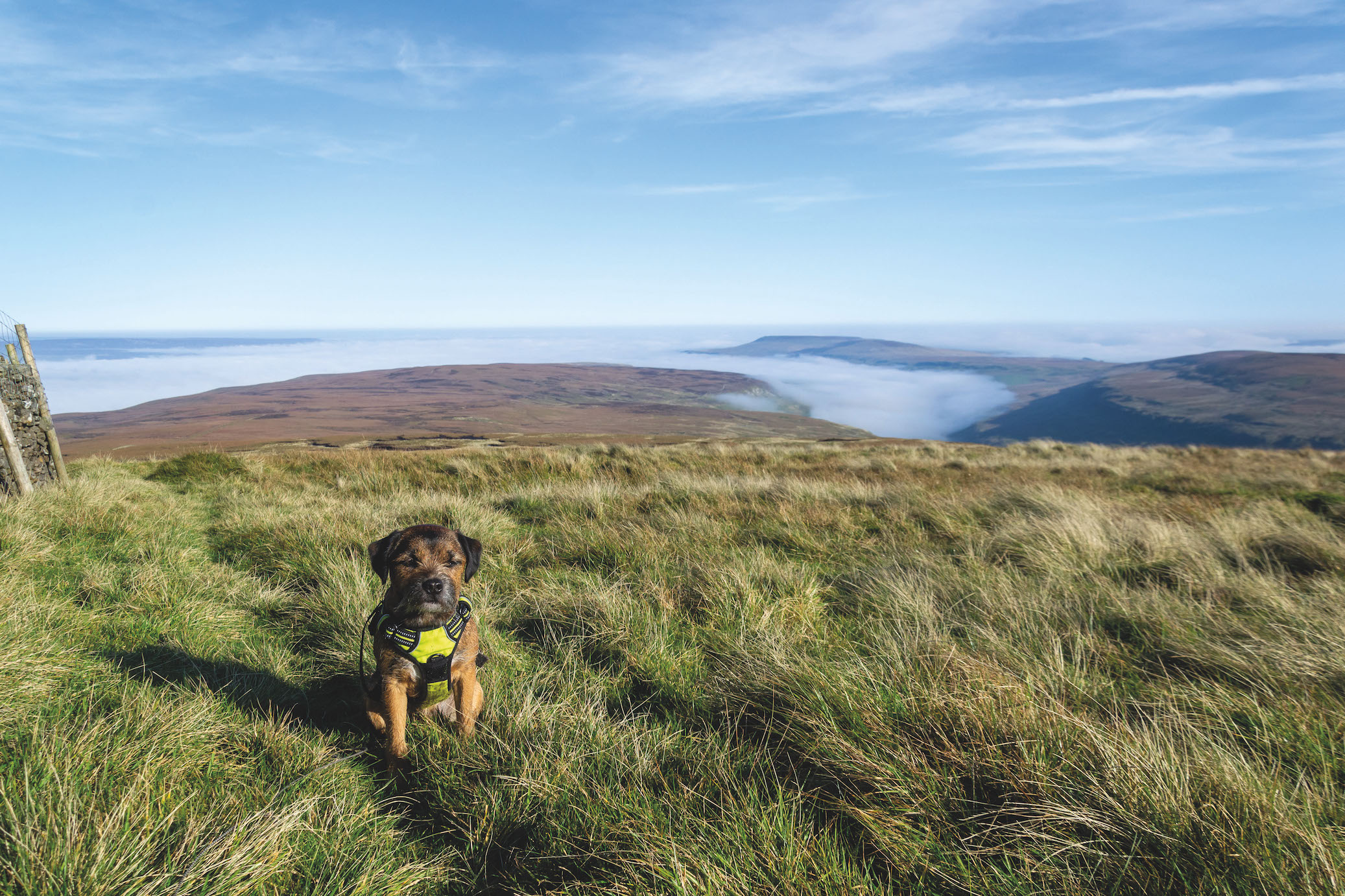
Sky-high views from the top of Buckden Pike
Buckden Pike is a hulk of a hill overlooking the very top of Upper Wharfedale, where some of the most satisfying hillwalking in the Dales is to be found. Parts of its lower flanks where chawed away by a glacier during the Ice Age and now form part of one of the most striking U-shaped valleys in the whole of Britain. At 702m (2303 feet) the climb is modest, but if you combine it with a pint by the beck at Cray and a wander along the path that contours around the hills to Yockenthwaite, you have a truly magical walk.
6. Great Whernside
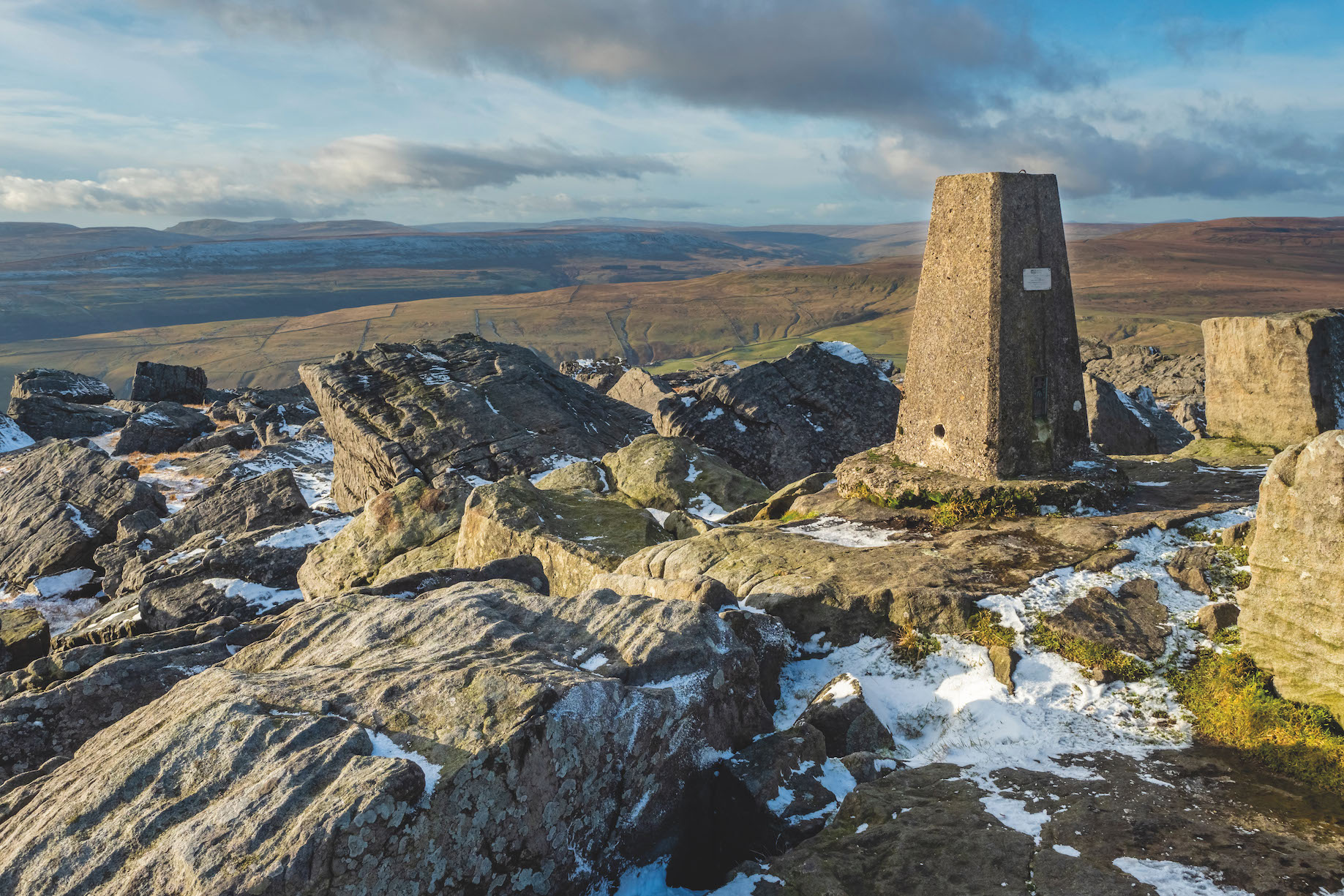
The gritstone boulder-capped summit of Great Whernside
Great Whernside is Buckden Pike’s sibling and shares many of its characteristics – a big, boggy fell with a huge sense of space on its summit. From Kettlewell it makes for an excellent walk in its own right, but if you’re feeling sprightly you can join it with Buckden Pike if you wish. Or if you’re feeling even sprightlier, lasso the pair with Firth Fell, opposite the valley, to make the ‘Wharfedale Three Peaks’ – a fantastic high-altitude moorland stomp to rival the more famous version, and which is run as a fundraising event by the local Mountain Rescue Team every year.
7. Whernside
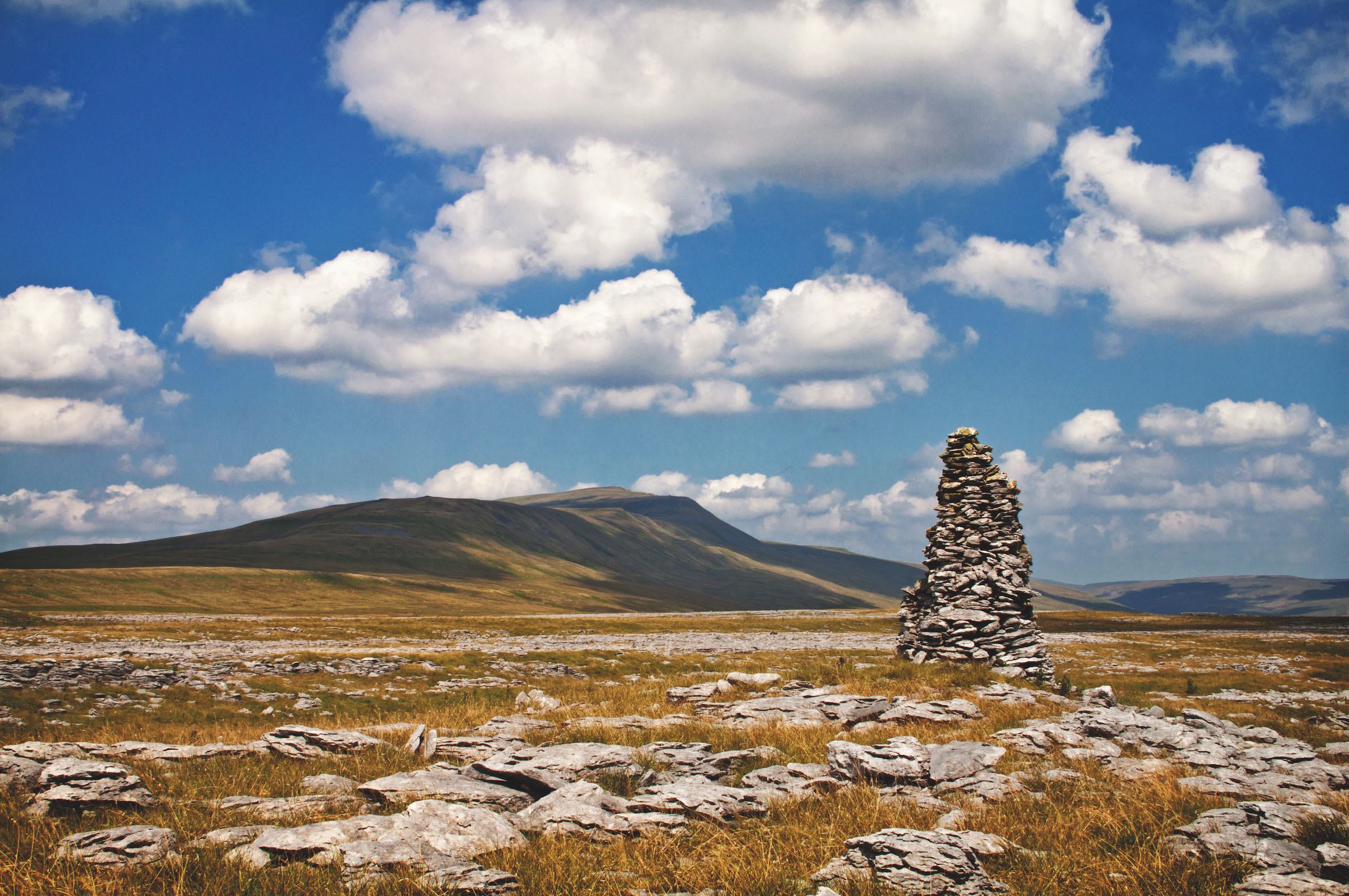
The whalebacked form of Whernside
Whernside (736m / 2414 feet) is the highest peak in modern-day Yorkshire, automatically assigning it a certain prestige, but truth be told it isn’t as characterful as either Ingleborough or Pen-y-ghent, with its wide, whalebacked form not offering quite as much interest on the way up. But all is forgiven when you reach the top (at least, on a clear day!), with those immense views stretching out to the Lake District, and a wonderful perspective of the long shape of Ingleborough and its dramatic, glacier-bitten slopes, scored with limestone terraces.
8. Simon’s Seat
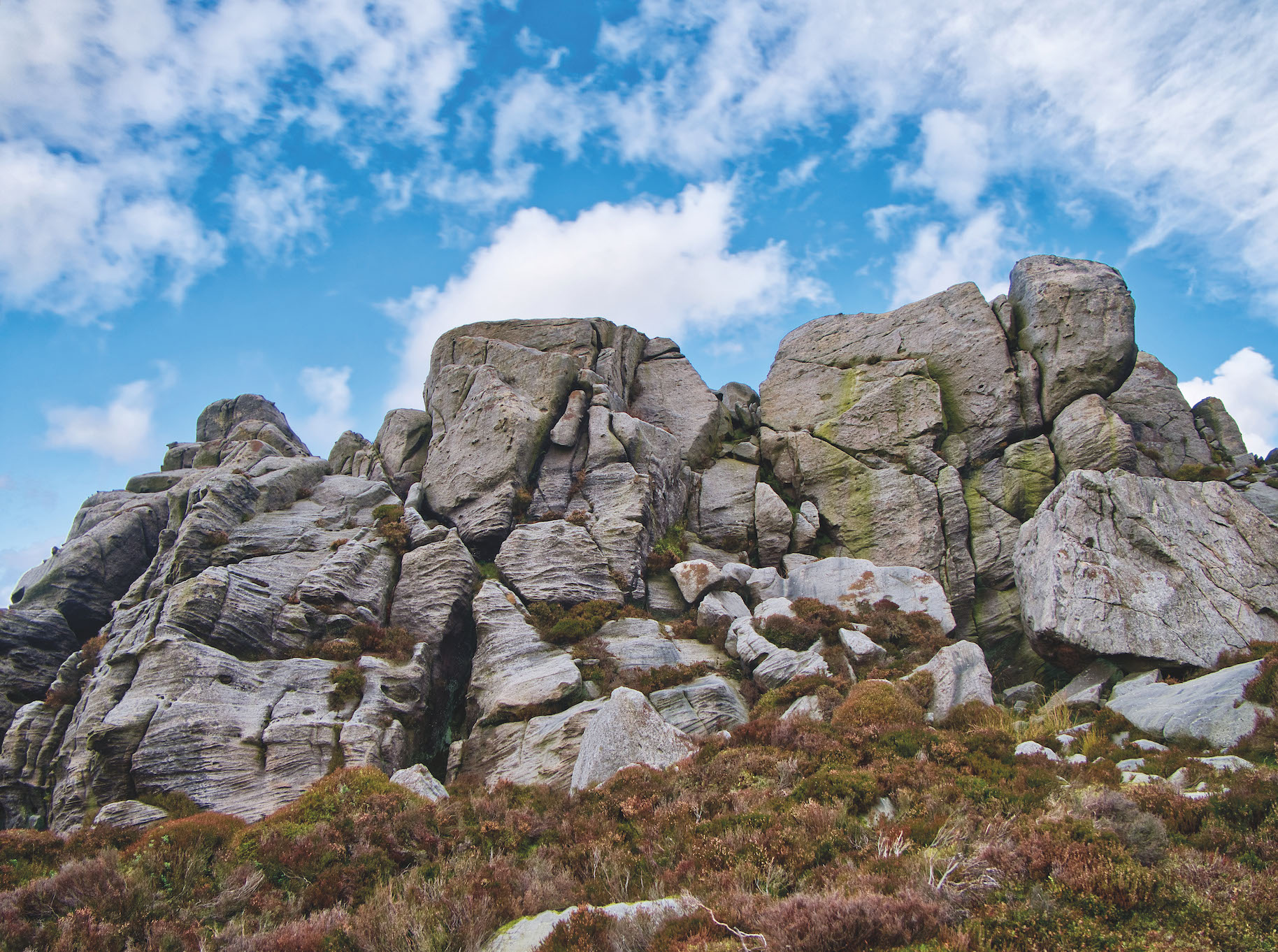
The Millstone Grit tor on Simon’s Seat
Fans of the Peak District will be at home on Simon’s Seat; a complex, wind-sculpted gritstone tor crowning the top of an expansive heather moorland, with gorgeous views of mid-Wharfedale and the fells beyond. There are a few ways to approach it, but this is the best: start at Bolton Abbey (a spectacular 12th century Augustinian priory), weave your way up the misleadingly-named Valley of Desolation, take in the top of Simon’s Seat, walk along the beautiful River Wharfe to Burnsall, and get the bus back to your start.
9. The wildflower meadows of Swaledale
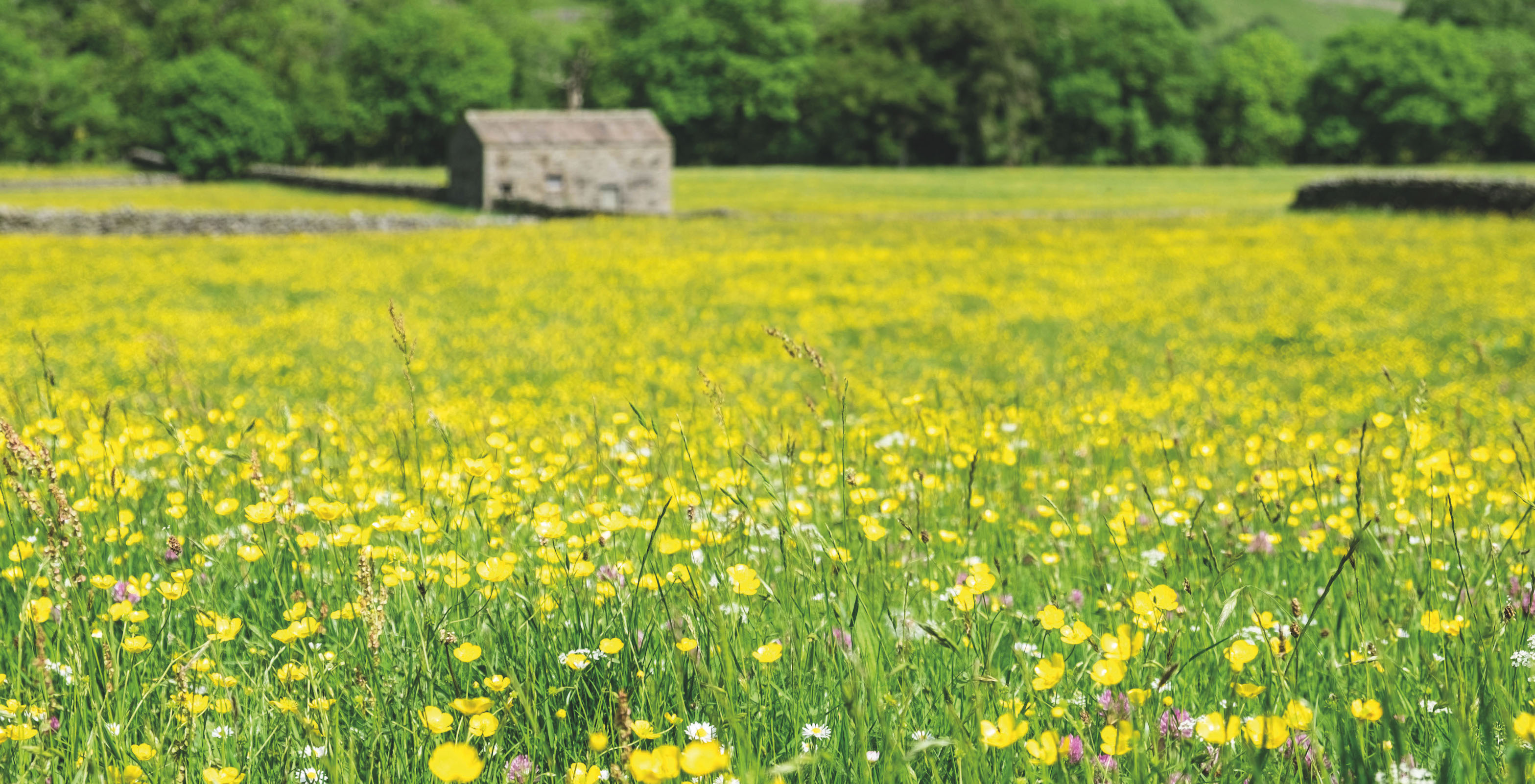
Swaledale’s meadows last until they are cut for hay in early summer
Swaledale is one of the most northerly and least-visited of the Dales, and in the fields around Muker and Kisdon, it hosts one of its most beautiful seasonal spectacles. For just a couple of months, from mid-May to early July (ish), the sheep are taken off the fields, and they spring to live with a spectacular array of wildflowers – as many as 50 species can be found in a single square metre in some places. They make for an easy but wonderful summery wander.
10. Aysgarth Falls
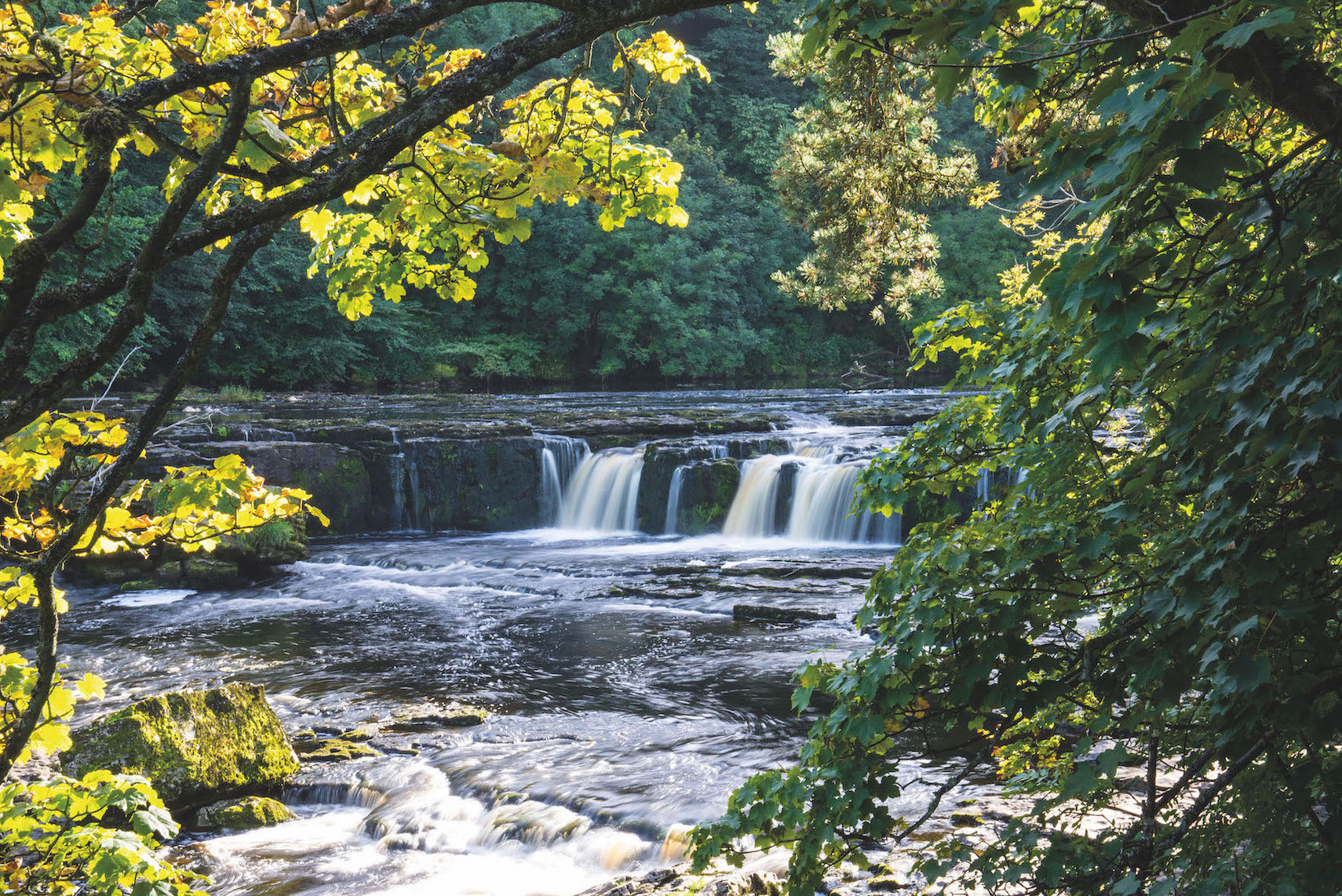
The cinematic setting of Aysgarth Falls
Aysgarth Falls is where the River Ure charges over a sequence of three limestone terraces, to spectacular effect. It is something of a honeypot, but if you catch it on a quiet day a wander around the falls and a stroll around the surrounding countryside can still be a joy. If it looks slightly familiar, it’s because you might have seen Kevin Costner duking it out with Little John here in the 1991 movie Robin Hood: Prince of Thieves.

